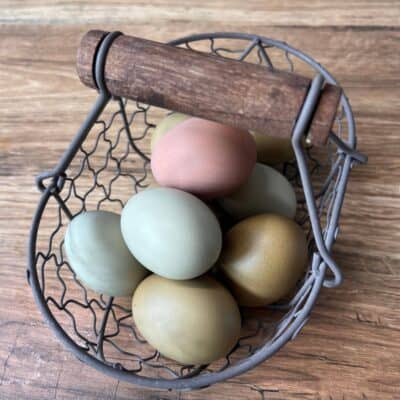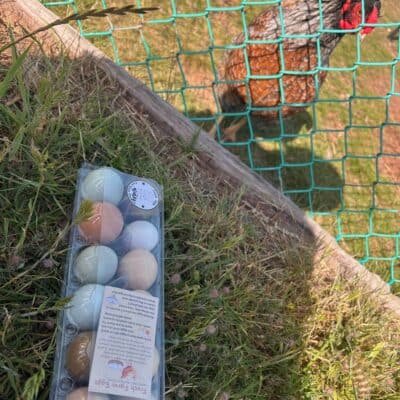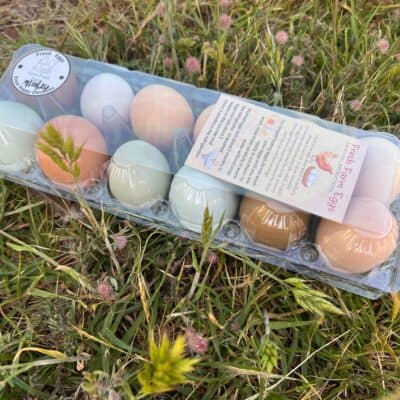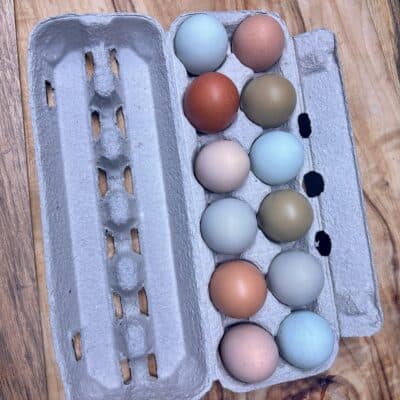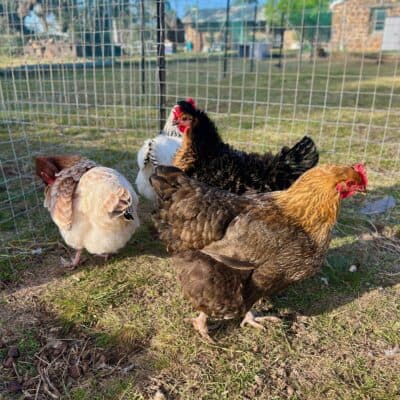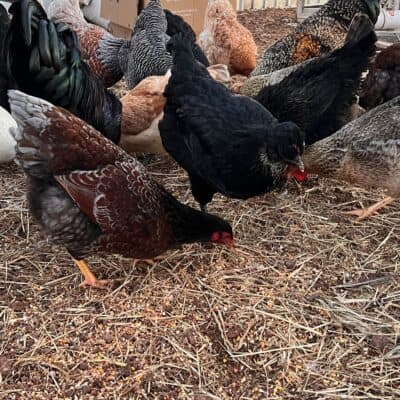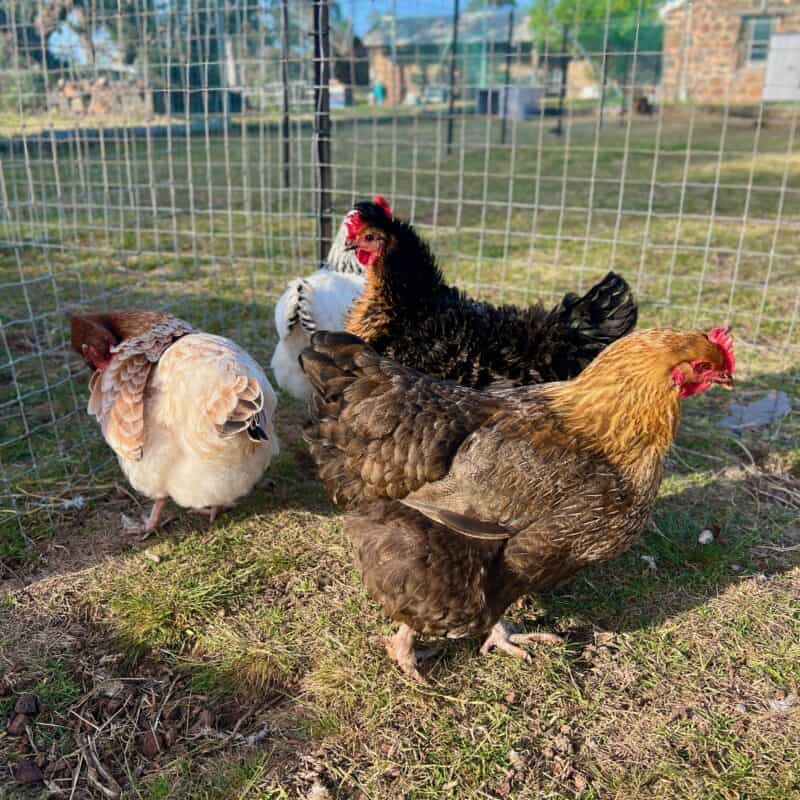
About Tarcome Backyard Hens
Our backyard rainbow layers are a lively and colourful mix of well-known coloured egg layers, combined with a few of our Appenzeller roosters who are “off duty” from the breeding pens. This mix gives us hardy, friendly hens that lay an incredible variety of egg colours.
The flock includes Cream Legbars, Araucanas, Marans, Olive Eggers, Easter Eggers, Light Sussex, and Frizzles, along with some Appenzeller influence. Together, they produce eggs in shades of blue, green, olive, cream, and brown — so every egg basket is different and full of colour.
These hens are not only reliable layers but also bring a lot of character to the yard. Each one is unique in looks and personality, from the frizzled feathers of the Frizzles to the elegant crests of the Appenzeller crosses. They are hardy, adaptable birds that do well in free-range or backyard settings, making them perfect for families and hobby keepers who enjoy a flock that is as fun to watch as it is productive.


Physical Features
Backyard rainbow layers come in a wide variety of shapes, sizes, and feather types, reflecting the diverse breeds in their background. You’ll find hens with upright crests from the Appenzellers, soft feathering from Sussex, the occasional frizzled plumage, and a range of comb styles depending on their parentage. Their plumage colours are just as varied, from solid whites and blacks to patterned and mixed shades.
The standout feature, of course, is their eggs. Thanks to the influence of breeds like Cream Legbar, Araucana, Olive Egger, and Easter Egger, these hens produce shells in an array of colours — blues, greens, olives, creams, and browns — creating the “rainbow” in their name.
Temperament and Behaviour
These mixed-breed hens are generally hardy, active, and adaptable, making them an excellent choice for backyard flocks. Most are good-natured and easy to handle, although temperament can vary depending on the breed influence. Light Sussex lines tend to be calm and steady, while Araucana and Easter Egger crosses may be a little more independent.
They enjoy free-ranging and are good foragers, but they also cope well in smaller backyard setups. The variety of personalities in a rainbow flock makes them fun and engaging to keep, with each hen adding her own character to the group. Overall, they are reliable layers, resilient birds, and an ideal choice for families and hobby keepers wanting a colourful and productive flock.
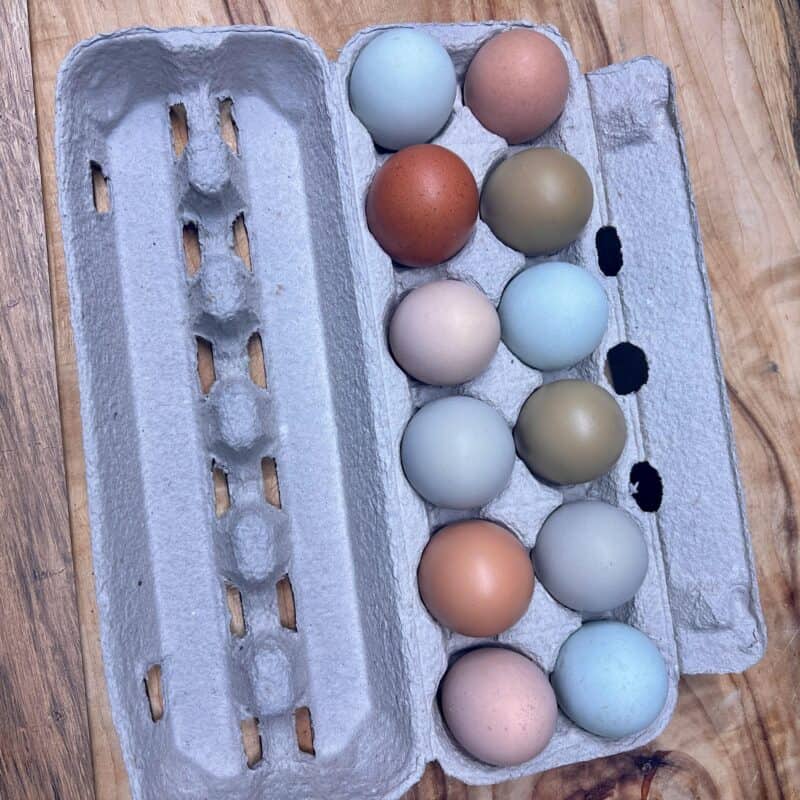
Fertile Eggs
Our rainbow layer hens are reliable producers, averaging around 180–220 eggs per year, depending on the season and individual bird. Egg size is usually medium to large, and the colour range is what makes them so special — shades of blue, green, olive, cream, and brown.
We offer fertile eggs from our rainbow layer flock during the breeding season. These eggs are a fantastic option for those who want to hatch their own colourful backyard flock. As these birds are cross-bred, each chick will be a surprise, with different feather colours, patterns, and egg-laying potential depending on its parentage.
Like all fertile eggs, hatch rates can vary, and success depends on incubation conditions and handling. We package and send eggs with care, but once they leave our farm we cannot guarantee hatchability. The end result, however, is a unique and lively flock that will reward you with a basket of colourful eggs and plenty of personality.
Please note: Part of the fun with rainbow layers is the surprise. The colour of the egg a chick hatches from doesn’t determine the colour of the eggs it will lay as an adult. Each hen develops her own genetics for shell colour, so your flock may grow up to produce an even wider mix of shades than you expect.
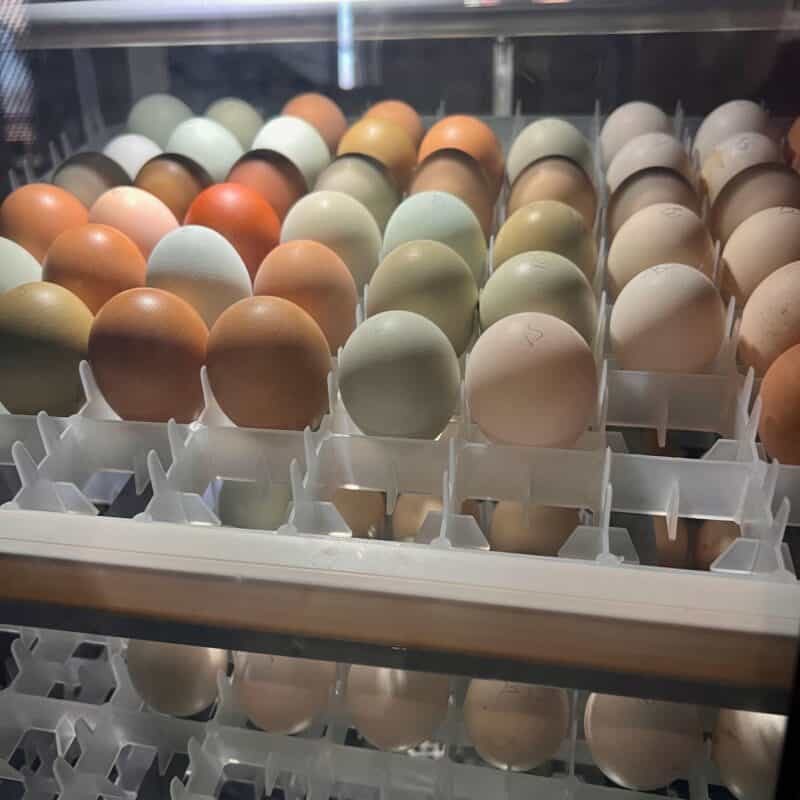
Incubation Settings
Rainbow layer eggs generally incubate under the same conditions as most standard chicken breeds.
At Tarcombe Farm, we set our incubators at 37.7°C with 40–45% humidity for the first 18 days. During lockdown, we reduce the temperature slightly to 37.5°C and raise the humidity to around 50–60%. These settings have given us consistent hatch rates across a wide variety of breeds.
For those in more humid climates, dry hatching can also be a good option. This method uses lower humidity through the first 18 days, allowing the natural environment to influence the air cell size. In many cases, the pipping and hatching process itself will raise humidity enough to achieve strong results.
As with all fertile eggs, careful turning, correct positioning, and stable temperature are key to success, regardless of which method you use.
.
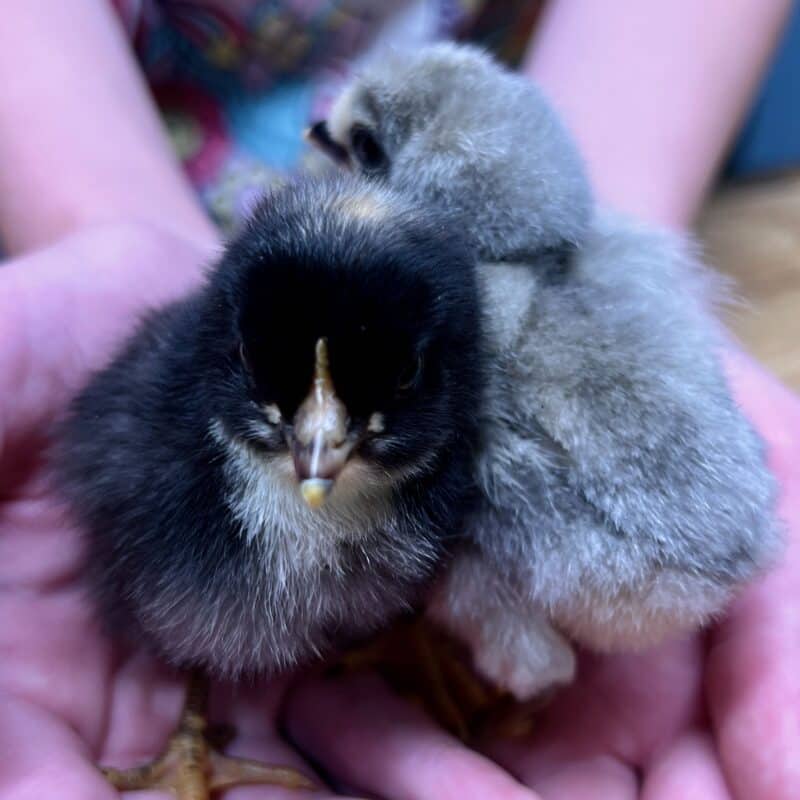
Buying our Birds
At Tarcombe Farm, we mainly offer fertile eggs and young unsexed chicks from our rainbow layer flock during the breeding season. These are perfect for anyone who wants to hatch or raise their own colourful backyard flock and enjoy the surprise of seeing the different feather patterns and egg colours develop as they grow.
For those who prefer started birds, we will also have a limited number of pullets available towards the end of the season, once we have grown them out. Pullets are an excellent choice if you want to skip the early brooding stage and add birds to your flock that are closer to point-of-lay.
Due to demand, availability is often limited, so we recommend getting in touch early to secure your order.


